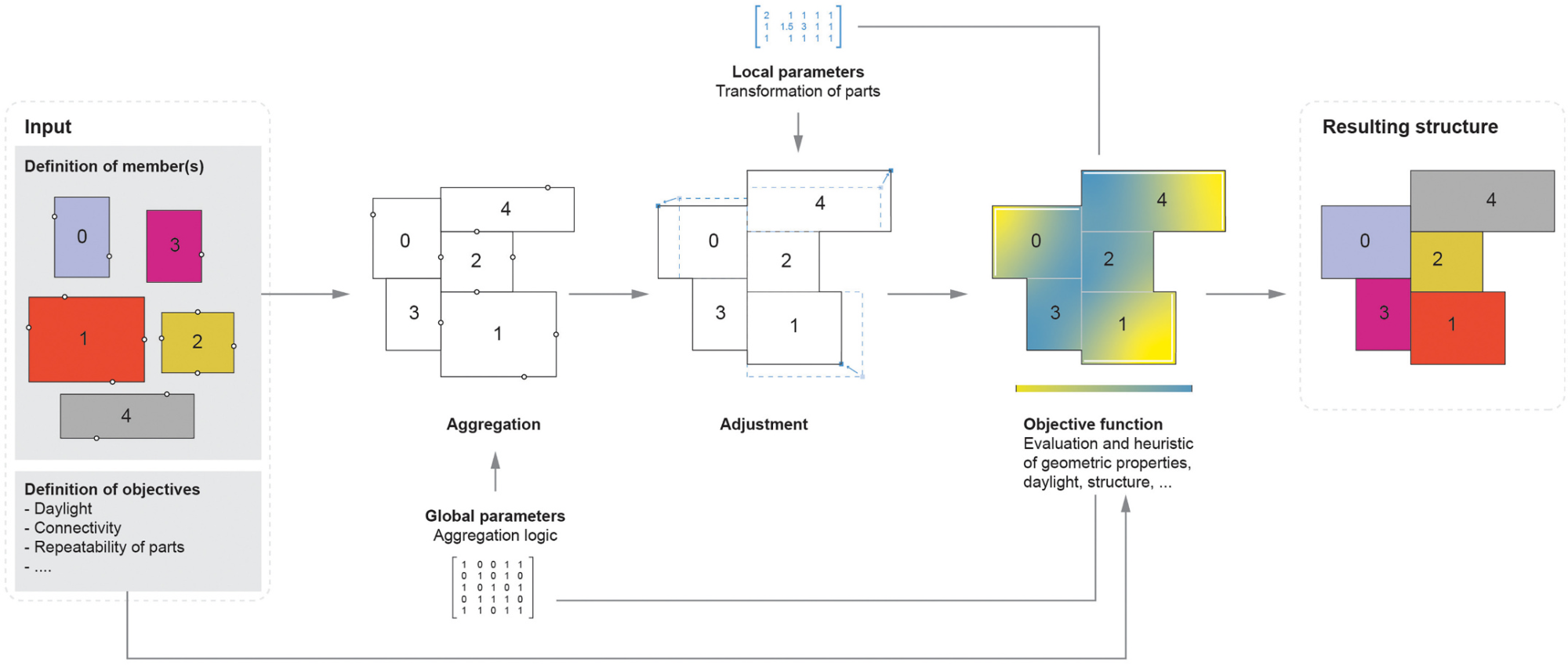Automated floorplan generation in architectural design: A review of methods and applications. Ramon Elias Weber, Caitlin Mueller, Christoph Reinhart. Automation in Construction, 2022. https://doi.org/10.1016/j.autcon.2022.104385
Accommodating predicted population growth and urbanization within the UN Climate Goals poses a significant challenge for disciplines that engage with the built environment. High performing buildings of the future should offer spatial quality for their users while utilizing resources as efficiently as possible for both construction and operation. In this review, we survey the value proposition of automatic floorplan layout generation methods and their opportunities for design guidance, feedback, and optimization in the creation of new buildings, in addition to applications for inventory characterization to survey existing housing stock and guide building policy and code. We divide existing methods into three categories: bottom-up methods, top-down methods, and referential methods. We explore advantages and challenges for each approach and propose a hybrid method for future building layout automation that utilizes a new set of metrics to create sustainable buildings of the future.



from the dataset and a model prepared and trained as neural net, TSP or referential data cluster. The model is applied to a user specified problem formulation and
postprocessed into geometric data resulting in a final structure.
